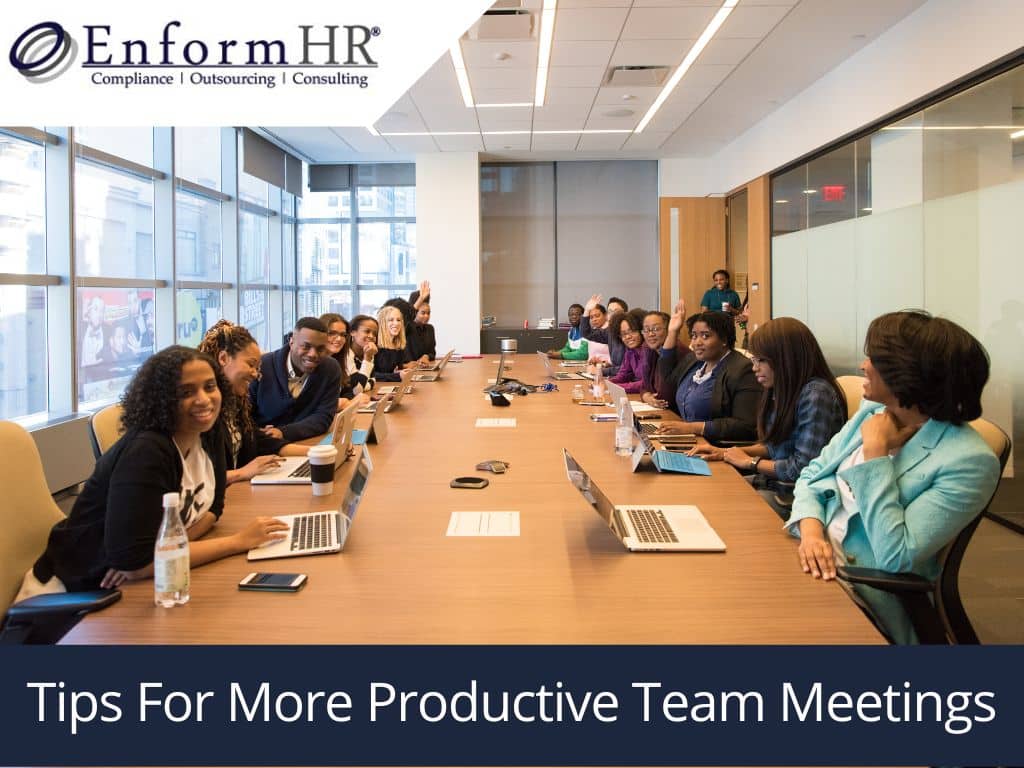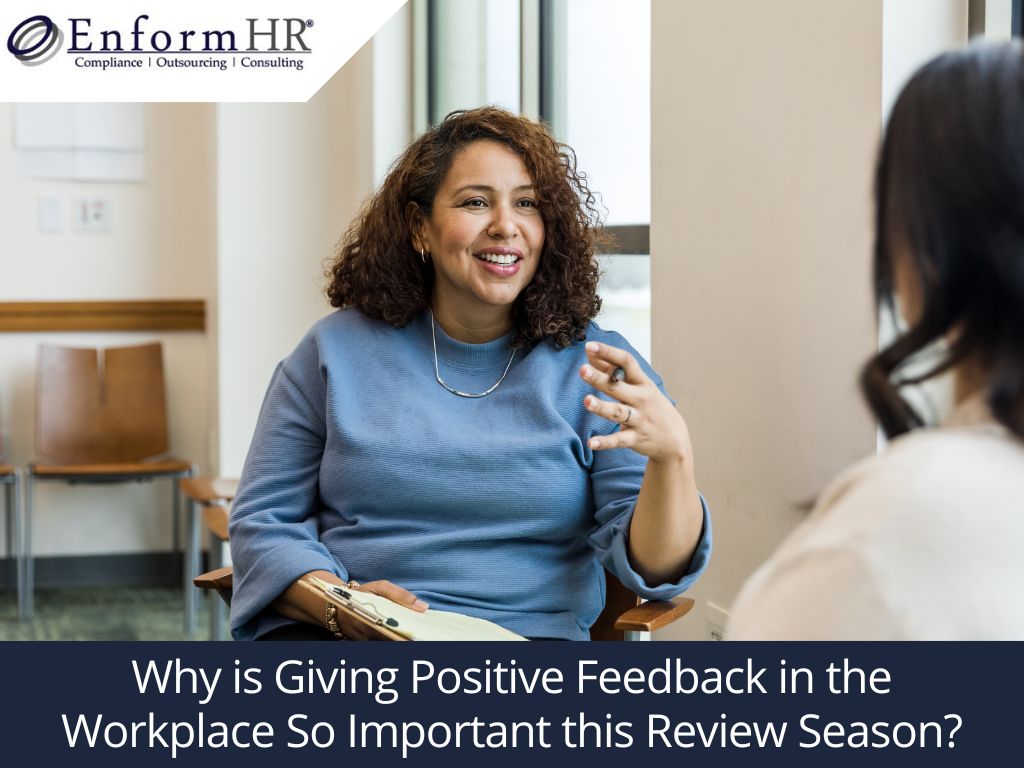Tips For More Productive Team Meetings

“This meeting could have been an email.” Does this sound familiar? Whether it’s meant as a lighthearted remark or a genuine concern, team meetings are a significant business function that should add, not detract, from your organization’s productivity. Whether your team is working remotely, in the office, or in a hybrid approach, there are some common etiquettes to help ensure a productive meeting. Setting an agenda, sticking to the time frames, keeping it fresh with guest speakers, and creating an action list for follow-up items are all great ways to make your meetings more efficient and effective. Let’s dive a little deeper into how you can make those team meetings even more productive.
Foster a Culture of Psychological Safety

If you have difficulty rallying the troops and finding ways to motivate your team members to participate in meetings, you’re not alone. It may be common for employees to choose the route of silence during team meetings. Sometimes, employees prefer keeping quiet over the risk of their ideas potentially getting shot down, experiencing embarrassment amongst their coworkers, or getting rebuked by the boss in front of their colleagues. Moreover, some employees may feel their opinions just don’t matter. A Gallup Poll found that only 30% of workers strongly agree that their opinions matter in the workplace.
To create a safe environment that encourages your employees to speak up and share their ideas, you have to help set the tone. You can accomplish this by initiating group-intensive questions that relate to the purpose of your team’s functions and speak to the strengths of your current culture. Part of psychological safety relates to the approachability of leaders. Show appreciation for ideas even if they don’t come to fruition. Team meetings are a perfect opportunity for you to be a role model for positive discussions. Finally, you can reinforce your Open-Door policy, encouraging employees to come to you with ideas outside meetings as well.
Proactively Interact

Having a structured agenda in place can help keep meetings on task and avoid the pitfalls of getting off-topic. When you have your team meeting, prepare succinct and detailed questions to levy to your team that will provide helpful feedback and offer meaningful opportunities for everyone in the meeting, even if they don’t speak up. Some examples may include:
- What was our biggest challenge this past month?
- What is one thing we should discuss in the next meeting?
- What was your (our) biggest accomplishment over the last 30 days?
- On a scale of 1-5, how would you rate our remote collaboration?
- What part of our culture are you most proud of?
Consider making the tone of your meetings less of a progress report and more of an interactive dialogue. This will help fuel employee engagement and morale, make your employees feel more valuable, and provide a bit more weight to the conversation.
To ensure these types of questions don’t take up too much of your meeting time, try creating an interactive Word Cloud or live survey that your team can participate in during the meeting. You can share the results immediately and talk about a few of the answers that appear! And you can use polling to probe your employees’ feelings on relevant topics and interests to get insight on how to improve future meetings. This is also a great way to encourage your less extroverted team members to provide feedback and answers… and let’s be honest, Word Clouds are always fun.
Be Transparent

Information closely held by upper management can foster a culture of uncertainty, which can lead to a skittish team, especially in times of ambiguity and when employees are looking to their leaders for answers. Use meetings to provide pertinent information to your team about ongoing projects, the future of the organization, recent accomplishments, and actions in motion. This is also a great time to clearly communicate any recent changes or policy updates in your organization.
Using meetings for vital communications helps validate their purpose. You can use meetings to show employees how their efforts contribute to your organization’s success. It’s important for employees not only to do their jobs but to understand why they do them. Showing your employees their purpose is an avid way to inspire your team. Transparency and purposeful communication will help employees trust and enjoy the context of meetings. And, you’ll keep your team engaged.
Don’t Be Afraid to Get Personal

With remote work menacing the normality of a social office scene, modern managers must find new and innovative ways to bring their teams together. A team meeting is a perfect place to support a cohesive and fruitful work environment while augmenting personal connection opportunities for your team.
On occasion, it can be advantageous to steer the conversation away from “shop talk” and focus on the well-being of your employees and more casual talk…How was their weekend? What plans do they have for the summer? How did their recent 5K race go?
Nothing beats feeling truly cared for and valued where you work. Using your team meetings to pursue wellness can reinforce a productive work environment. Your team is one of your most important assets. If they don’t feel valued as a person, they may not be able to contribute to the best of their ability, or worse, they might not be around for the next team meeting.
Final Thoughts
Structuring your team meetings to be more productive is not without its challenges. But remember, don’t just have a meeting simply to have a meeting. Make sure your meeting is targeted, purposeful, provides value, and aims to better your organizational culture and strategy. If you keep these tips in mind, you’re bound to experience greater results from each gathering.
EnformHR specializes in Human Resource Consulting. If you find your organization embarking on change, we can help. Don’t hesitate to get in touch with us to support you and your employees in preparing for times of transition.


